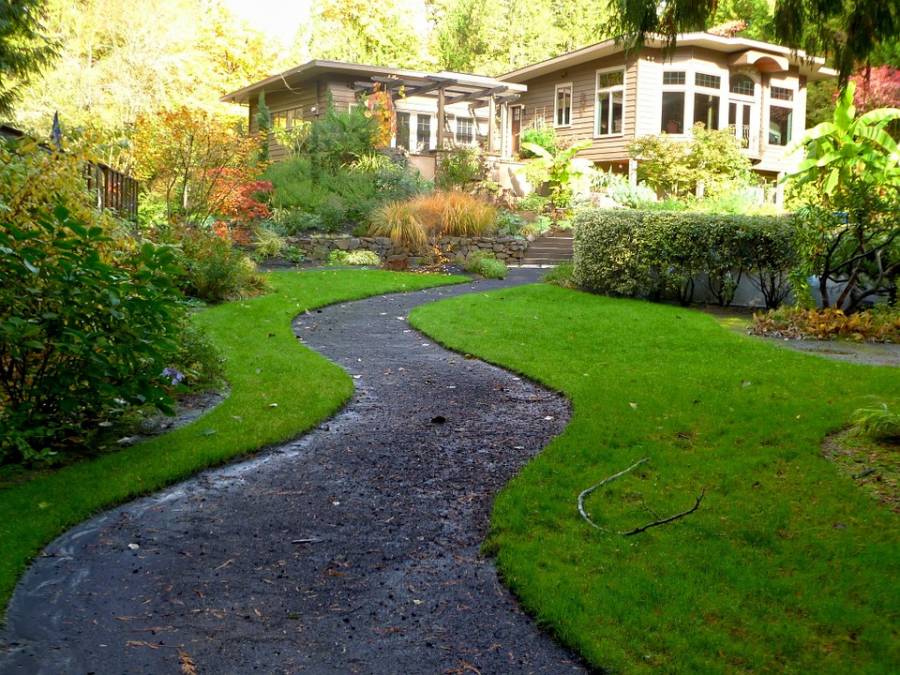No need for fancy DIY skills, a lot of money, or a ton of time to pull off these yard upgrades. It’s your yard — yours to do with as you wish. And while that’s great, that doesn’t mean you have to be one of those people who spends every spare moment in their yard, sprucing it up. But, still, your landscaping could use a little something. But something easy. Here are a few totally doable projects that your budget will barely notice, but your neighbors definitely will.

Add Some (Tough) Edging
Tell your grass who’s boss with edging that can stand up to even the crabbiest of all crabgrasses.
But don’t make the mistake that many homeowners make of buying the flexible plastic stuff, thinking it will be easier to install. It’ll look cheap and amateurish from day one.
Worse, it won’t last. And before you know it, you won’t be able to tell where your garden bed ends and your “lawn” begins.
Instead buy the more rigid, tough stuff in either fiberglass, aluminum, or steel.
Tips on installing edging:
- Lay out a hose in the pattern you want.
- Sprinkle flour or powdered chalk to mark the hose pattern.
- Use a lawn edger (or spade) to make an incision for the edging.
- Tap the edging into the incision with a rubber mallet.
Create a Focal Point with a Berm
A berm is a mound of gently sloping earth, often created to help with drainage. You can also build them to create “island beds,” a focal point of textures and colors that are so much more interesting than plain ol’ green grass.
Plus, they’ll give you privacy — and diffuse street noises. What’s not to like about that? Especially if you live in more urban areas.
For most yards, berms should max out at 2-feet high because of the space needed to properly build one.
They need a ratio of 4-6 feet of width for every foot of height. That’s at least 8 feet for a typical 2-foot high berm. So be sure you have the room, or decrease the height of your berm.
Popular berm plantings include:
- Flowering bushes, such as azaleas
- Evergreens, such as blue spruce
- Perennials such as periwinkle
- Tall, swaying prairie grasses
- Lots of mulch to keep weeds away
Build a Tree Surround
Installing a masonry surround for a tree is a two-fer project: It looks great, and it means you’ve got less to mow. Come to think of it, it’s a three-fer. It can work as extra seating when you have your lawn party, too!
All it takes is digging a circular trench, adding some sand, and installing brick, cement blocks, or stone. Just go for whatever look you like best.
The trickiest part is getting an even circle around the tree. Here’s how:
- Tie a rope around the tree, making a loop big enough so that when you pull it taut against the tree, the outer edge of the loop is right where you want the surround to be.
- Set your spade inside the loop with the handle plumb — straight up and down. Now, as you move around the tree, the loop of rope keeps the spade exactly the same distance from the base of the tree, creating a nice circle.
Then build the tree surround:
- Dig out a circular trench about 8 inches deep and 6 inches wide.
- Add a layer of sand.
- Set bricks at an angle for a saw-tooth effect or lay them end-to-end.
- Fill the surround with 2 to 3 inches of mulch.
Source: HouseLogic.com.


